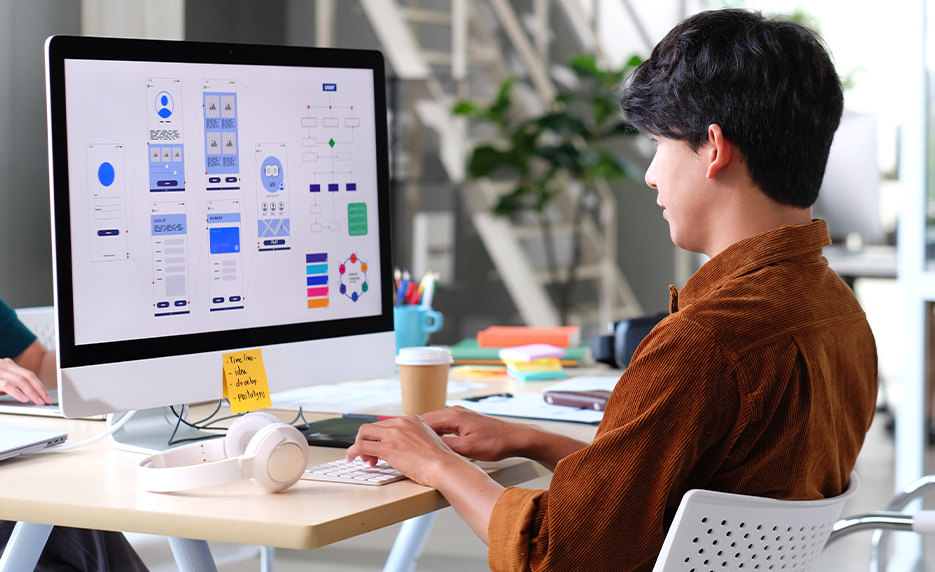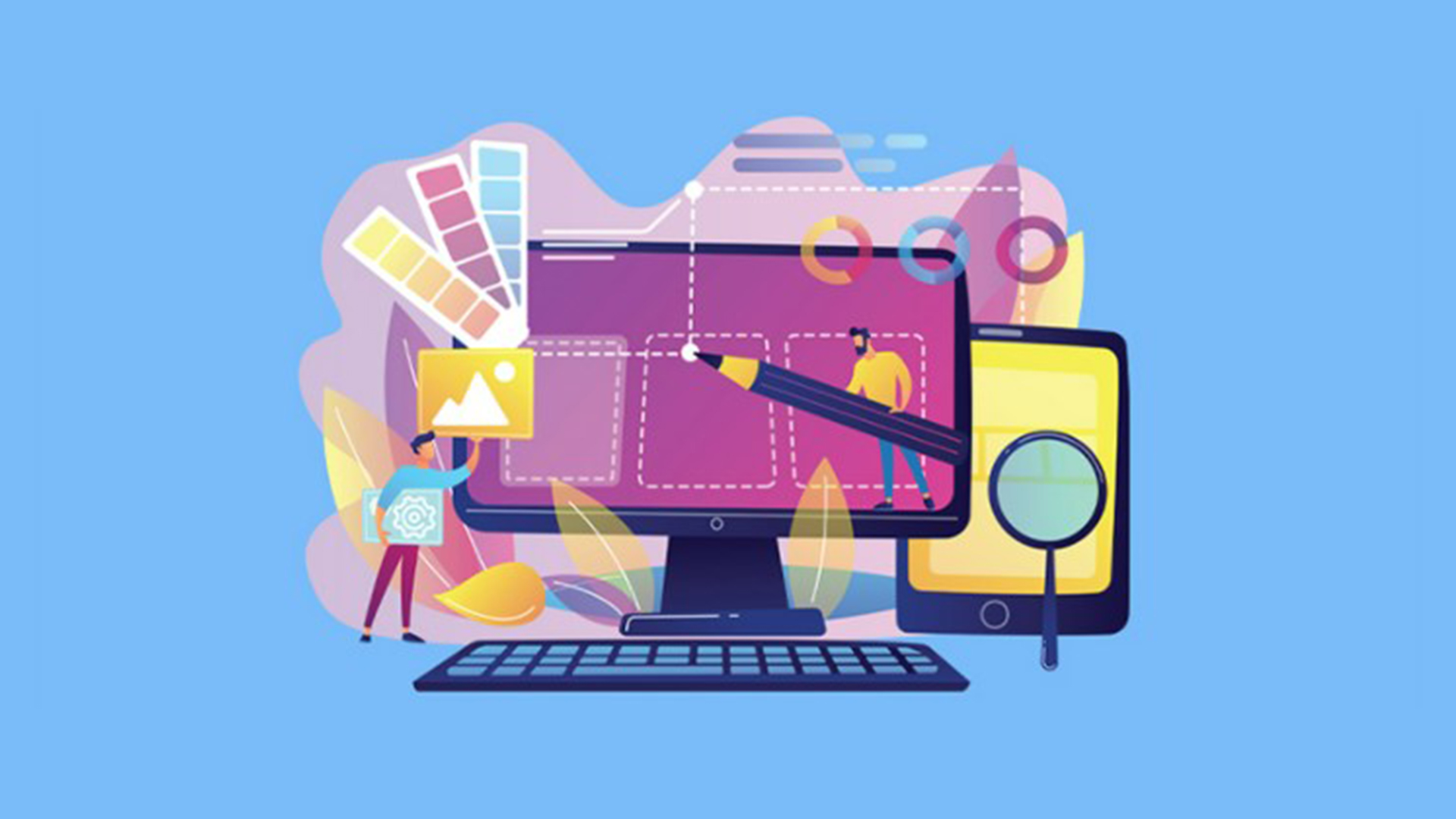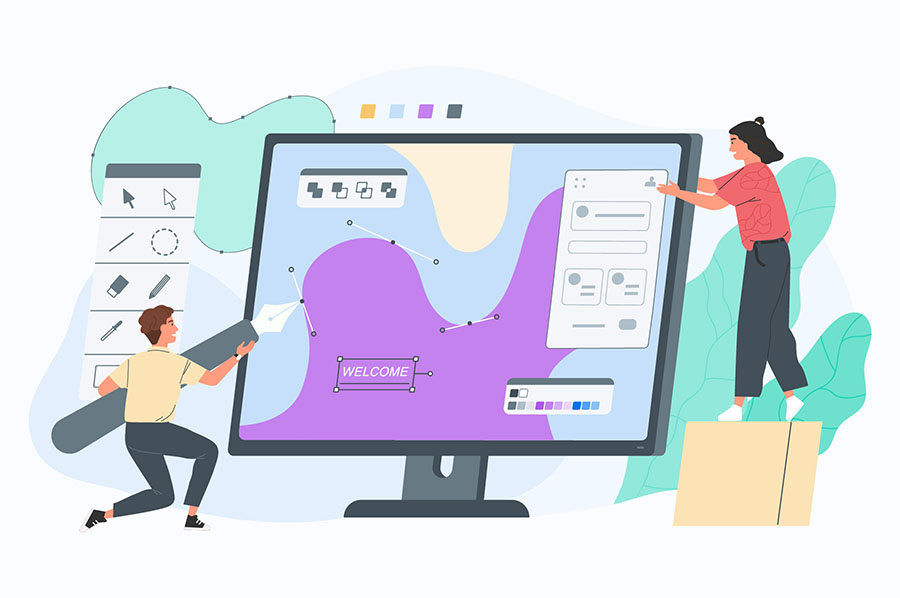All Categories
Featured
Table of Contents
- – Web Design - Website Design Tutorials, Article...
- – Web Design Courses & Tutorials - Codecademy T...
- – Top 30 Web Design Companies - Apr 2022 - Desi...
- – Otc Web Design Girdwood, Alaska - Web Design ...
- – Minneapolis Web Design - 100+ Five Star Revie...
- – Html Responsive Web Design - W3schools Tips a...
- – Web Design Definition - Techterms Tips and T...
- – Learn Responsive Design - Web.dev Tips and T...
- – Web Design Services By Freelance Website Des...
- – Minneapolis Web Design - 100+ Five Star Revi...
- – Google Web Designer - Home Tips and Tricks:
Web Design - Website Design Tutorials, Articles And Free Stuff Tips and Tricks:
Quick summary Use and the utility, not the visual design, identify the success or failure of a site. Given that the visitor of the page is the only person who clicks the mouse and therefore decides everything, user-centric design has actually developed as a standard technique for effective and profit-oriented web style - web design frederick md.
and the utility, not the visual style, figure out the success or failure of a site. Since the visitor of the page is the only person who clicks the mouse and therefore decides everything, user-centric style has ended up being a standard technique for effective and profit-oriented web style. After all, if users can't use a feature, it might too not exist.
g. where the search box need to be positioned) as it has currently been done in a number of short articles; instead we focus on the methods which, utilized effectively, can result in more sophisticated design decisions and streamline the procedure of viewing presented info. Please see that you may be interested in the usability-related posts we've published before: Concepts Of Excellent Website Style And Reliable Web Style Guidelines, In order to utilize the principles properly we initially need to comprehend how users communicate with sites, how they believe and what are the standard patterns of users' behavior.
Web Design Courses & Tutorials - Codecademy Tips and Tricks:
Visitors glance at each new page, scan some of the text, and click on the first link that captures their interest or slightly looks like the thing they're looking for. In reality, there are large parts of the page they don't even take a look at. Most users look for something interesting (or beneficial) and clickable; as quickly as some promising prospects are discovered, users click.
If a page offers users with premium content, they want to jeopardize the content with ads and the design of the website. This is the reason that not-that-well-designed sites with premium material acquire a great deal of traffic over years. Content is more essential than the style which supports it.
Extremely simple concept: If a site isn't able to meet users' expectations, then designer stopped working to get his task done correctly and the business loses money. The higher is the cognitive load and the less intuitive is the navigation, the more willing are users to leave the website and search for options.
Top 30 Web Design Companies - Apr 2022 - Designrush Tips and Tricks:
Neither do they scan webpage in a linear style, going sequentially from one website area to another one. Rather users satisfice; they select the very first affordable alternative. As quickly as they discover a link that appears like it may result in the goal, there is an excellent chance that it will be right away clicked.
It does not matter to us if we understand how things work, as long as we can utilize them. If your audience is going to imitate you're creating signboard, then style great billboards." Users want to be able to control their internet browser and count on the constant information presentation throughout the site.
If the navigation and website architecture aren't intuitive, the number of concern marks grows and makes it harder for users to comprehend how the system works and how to get from point A to point B. A clear structure, moderate visual ideas and easily recognizable links can help users to find their path to their goal.
Otc Web Design Girdwood, Alaska - Web Design & Google ... Tips and Tricks:

Because users tend to explore sites according to the "F"-pattern, these 3 statements would be the very first aspects users will see on the page once it is filled. The design itself is basic and instinctive, to understand what the page is about the user requires to search for the response.
Once you've achieved this, you can communicate why the system is useful and how users can take advantage of it. People will not use your website if they can't discover their way around it. 2. Do Not Squander Users' Patience, In every task when you are going to use your visitors some service or tool, attempt to keep your user requirements very little.
Newbie visitors want to, not filling long web types for an account they might never use in the future. Let users explore the website and discover your services without requiring them into sharing personal data. It's not sensible to force users to enter an e-mail address to evaluate the function.
Minneapolis Web Design - 100+ Five Star Reviews - Seo ... Tips and Tricks:
And that's what you want your users to feel on your web website. The registration can be done in less than 30 seconds as the type has horizontal orientation, the user does not even require to scroll the page.
A user registration alone suffices of an impediment to user navigation to cut down on incoming traffic. 3. Handle To Focus Users' Attention, As websites offer both fixed and dynamic content, some aspects of the user interface attract attention more than others do. Obviously, images are more eye-catching than the text just as the sentences marked as strong are more appealing than plain text.
Focusing users' attention to specific locations of the site with a moderate use of visual aspects can help your visitors to obtain from point A to point B without thinking about how it in fact is supposed to be done. The less question marks visitors have, the they have and the more trust they can develop towards the business the website represents.
Html Responsive Web Design - W3schools Tips and Tricks:
4. Aim For Feature Direct exposure, Modern website design are normally slammed due to their technique of guiding users with aesthetically appealing 1-2-3-done-steps, big buttons with visual impacts etc. But from the style perspective these components actually aren't a bad thing. On the contrary, such as they lead the visitors through the website content in an extremely simple and user-friendly method.
The website has 9 primary navigation alternatives which show up at the very first glimpse. The option of colors might be too light. is a fundamental principle of successful user interface style. It does not truly matter how this is accomplished. What matters is that the content is well-understood and visitors feel comfy with the way they connect with the system.
Instead a price: simply what visitors are looking for. An ideal option for effective writing is touse brief and succinct expressions (come to the point as rapidly as possible), usage scannable layout (categorize the material, use several heading levels, utilize visual elements and bulleted lists which break the circulation of consistent text blocks), usage plain and objective language (a promo doesn't require to sound like ad; offer your users some affordable and unbiased reason why they ought to utilize your service or stay on your website)6.
Web Design Definition - Techterms Tips and Tricks:
Users are seldom on a website to take pleasure in the style; moreover, in a lot of cases they are searching for the info despite the design - web design frederick md. Pursue simpleness instead of intricacy. From the visitors' perspective, the best website style is a pure text, without any ads or more content blocks matching exactly the question visitors used or the content they've been looking for.
Finch clearly presents the information about the site and provides visitors an option of alternatives without overcrowding them with unneeded material. Not just does it help to for the visitors, but it makes it possible to perceive the info provided on the screen.
Complex structures are harder to read, scan, evaluate and deal with. If you have the option in between separating two style segments by a noticeable line or by some whitespace, it's normally much better to utilize the whitespace option. (Simon's Law): the much better you manage to provide users with a sense of visual hierarchy, the much easier your content will be to perceive.
Learn Responsive Design - Web.dev Tips and Tricks:
The very same conventions and rules must be applied to all elements.: do the most with the least quantity of cues and visual aspects. Four major points to be considered: simplicity, clarity, distinctiveness, and emphasis. Simpleness includes only the aspects that are most crucial for interaction. Clarity: all components ought to be designed so their meaning is not unclear.
Conventions Are Our Friends, Conventional design of website aspects doesn't result in a dull web site. It would be a functionality headache if all sites had different visual presentation of RSS-feeds.
understand what they're getting out of a website navigation, text structure, search positioning etc. A common example from functionality sessions is to translate the page in Japanese (presuming your web users don't know Japanese, e. g. with Babelfish) and supply your functionality testers with a task to find something in the page of different language.
Web Design Services By Freelance Website Designers - Fiverr Tips and Tricks:
Steve Krug suggests that it's better to, however benefit from conventions when you do not. 10. Test Early, Test Often, This so-called TETO-principle needs to be used to every web design project as usability tests frequently supply into significant issues and problems connected to a given design. Test not far too late, not too little and not for the incorrect reasons.
Some essential indicate remember: according to Steve Krug, and screening one user early in the task is much better than screening 50 near completion. Accoring to Boehm's very first law, errors are most frequent during requirements and style activities and are the more pricey the later they are removed.
That suggests that you create something, test it, fix it and after that test it once again. There may be problems which have not been discovered during the very first round as users were almost blocked by other problems. functionality tests. Either you'll be pointed to the problems you have or you'll be pointed to the absence of major style flaws which remains in both cases a beneficial insight for your job.
Minneapolis Web Design - 100+ Five Star Reviews - Seo ... Tips and Tricks:

This holds for designers. After you've worked on a website for few weeks, you can't observe it from a fresh point of view anymore. You understand how it is built and for that reason you know precisely how it works you have the knowledge independent testers and visitors of your site would not have.
It can be linked to other areas such as graphic design, user experience, and multimedia arts, however is more aptly seen from a technological standpoint. It has become a large part of people's daily lives. It is difficult to imagine the Internet without animated graphics, various designs of typography, background, videos and music.

During 1991 to 1993 the World Wide Web was born. Text-only pages might be seen utilizing an easy line-mode browser. In 1993 Marc Andreessen and Eric Bina, created the Mosaic browser. At the time there were numerous web browsers, nevertheless the majority of them were Unix-based and naturally text heavy. There had actually been no integrated method to graphic style aspects such as images or noises.
Google Web Designer - Home Tips and Tricks:
The W3C was developed in October 1994 to "lead the Internet to its full capacity by developing typical procedures that promote its evolution and ensure its interoperability." This prevented any one business from monopolizing a propriety internet browser and programming language, which might have modified the effect of the Web as a whole.
As this has actually happened the innovation of the web has actually also carried on. There have also been considerable changes in the method people utilize and access the web, and this has changed how websites are developed. Considering that completion of the web browsers wars [] brand-new browsers have been launched. Many of these are open source indicating that they tend to have quicker advancement and are more supportive of new standards.
Learn more about Lovell Media Group LLC or TrainACETable of Contents
- – Web Design - Website Design Tutorials, Article...
- – Web Design Courses & Tutorials - Codecademy T...
- – Top 30 Web Design Companies - Apr 2022 - Desi...
- – Otc Web Design Girdwood, Alaska - Web Design ...
- – Minneapolis Web Design - 100+ Five Star Revie...
- – Html Responsive Web Design - W3schools Tips a...
- – Web Design Definition - Techterms Tips and T...
- – Learn Responsive Design - Web.dev Tips and T...
- – Web Design Services By Freelance Website Des...
- – Minneapolis Web Design - 100+ Five Star Revi...
- – Google Web Designer - Home Tips and Tricks:
Latest Posts
Html Responsive Web Design - W3schools Tips and Tricks:
Web Design Projects - Behance Tips and Tricks:
Mrw Web Design - Wordpress Websites For Nonprofits ... Tips and Tricks:
More
Latest Posts
Html Responsive Web Design - W3schools Tips and Tricks:
Web Design Projects - Behance Tips and Tricks:
Mrw Web Design - Wordpress Websites For Nonprofits ... Tips and Tricks: